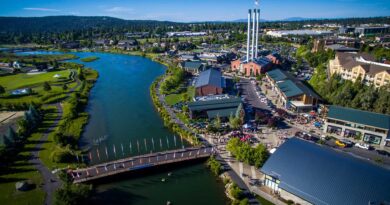History of Boardman Ohio
Boardman, Ohio, a township nestled in Mahoning County, stands as a testament to the dynamic interplay of historical development and modern progression. Since its founding in the late 18th century, Boardman has evolved from a humble agricultural settlement into a bustling suburban community, rich in cultural heritage and pivotal historical milestones.
Early Settlement and Development
Boardman Township was officially established in 1798, named after Elijah Boardman, a land investor and later U.S. senator from Connecticut. It was part of the Connecticut Western Reserve, an area in Northeast Ohio that Connecticut reserved for its own citizens following the American Revolutionary War. The early settlers of Boardman, mostly from Connecticut, were drawn by the fertile land and the promise of prosperity in the new world.
The township’s layout was typical of the gridiron pattern used in New England, reflecting its settlers’ origins. The early economy was predominantly agricultural, with crops such as wheat, corn, and apples thriving in the Ohio soil. Over the decades, these farms would not only sustain local families but also fuel the township’s growth by attracting businesses and trade.
Industrialization and Growth
The advent of the 20th century brought significant changes to Boardman. The discovery of coal and the rise of nearby Youngstown’s steel industry drew many to the area in search of employment. Although Boardman remained primarily residential, it benefited from the economic ripple effects of industrialization, with new businesses and services springing up to cater to an increasing population.
During the post-World War II era, Boardman experienced a suburban boom, typical of many American towns. The development of highways and increased automobile ownership made it easier for people to live in Boardman while commuting to jobs in Youngstown and other cities. This period saw the construction of numerous residential subdivisions and the establishment of local schools, parks, and shopping centers, shaping the township into a desirable suburban enclave.
Modern Boardman
Today, Boardman is characterized by its blend of residential comfort and commercial vibrancy. It is home to the Southern Park Mall, one of the region’s major retail centers since its opening in 1970. The mall not only serves as a shopping destination but also as a community hub for events and social gatherings.
The township maintains a strong sense of community through its well-attended local events, such as the annual Boardman Rotary Oktoberfest. This event, held in Boardman Park, showcases the township’s community spirit and provides a space for residents to enjoy crafts, food, and entertainment reflective of both local and international cultures.
Preservation and Challenges
As Boardman moves forward, it faces the challenges typical of many suburban areas in the United States, including managing growth and maintaining infrastructure. Efforts to preserve its rich history are evident in the preservation of key historical sites and the active role of the Boardman Historical Society. These initiatives aim to keep the township’s heritage alive while continuing to make Boardman a welcoming place for new generations.
Conclusion
From its early days as part of the Connecticut Western Reserve to its current status as a thriving suburban township, Boardman, Ohio, embodies the quintessential American story of growth and change. Its rich history is matched only by its community’s commitment to preserving its past while continually adapting to the needs of the future.
Discover more from City Towner
Subscribe to get the latest posts sent to your email.


